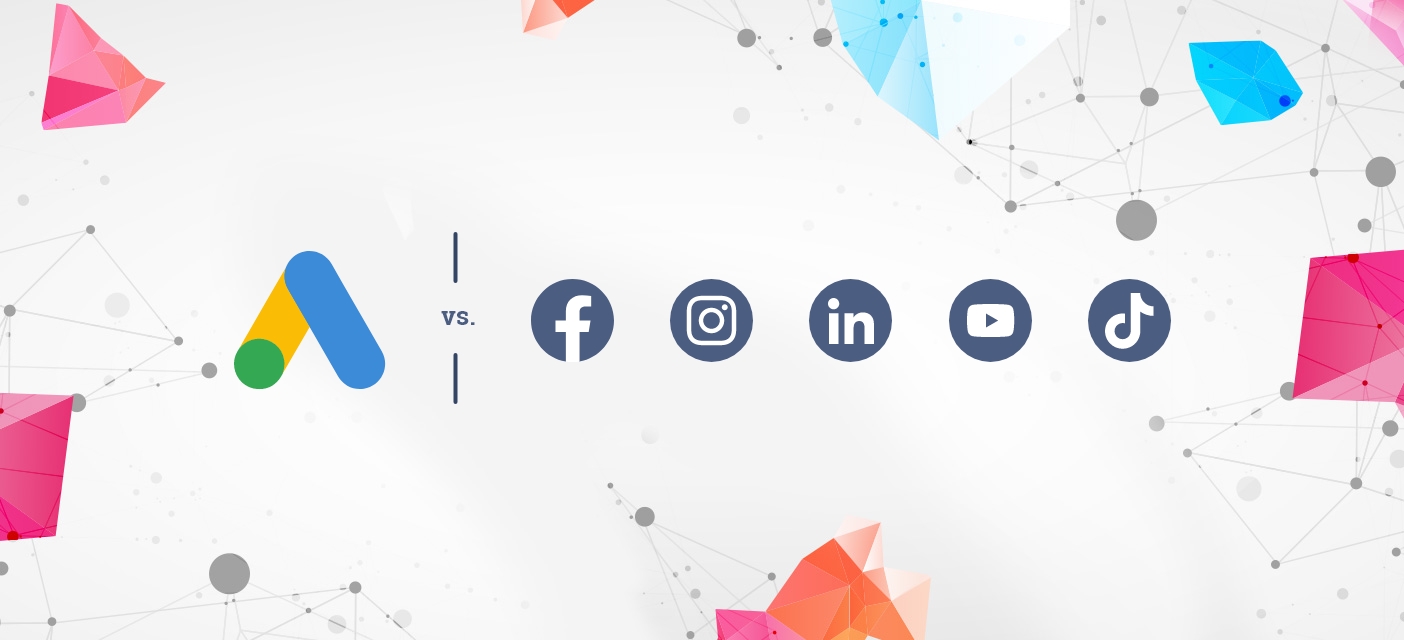

In today’s digital world, it’s hard to imagine executing an effective marketing strategy without incorporating paid advertising. Therefore, choosing the right advertising channels becomes crucial. Which ones are worth considering?
In internet marketing, Google Ads and Social Media Ads play a particularly important role today.
Below, we present the key benefits of running individual advertising campaigns, as well as highlighting the differences between them.
What characterizes a Google Ads campaign?
Precision in Reaching the Customer
Google Ads allows for precise targeting of users who are actively searching for products or services using the Google search engine. This campaign reaches people with high purchasing intent and specific needs. The flexibility of the budget and advanced analytical tools allow for achieving a very high return on investment in Google advertising.
Building Engagement and Recognition
Through graphic and video creations, Google allows reaching a wide audience and encouraging interaction on the site (contact with the company, purchase on the site, etc.).
Variety of Ad Formats
Google Ads offers a wide range of ad formats, including:
- Text Ads – displayed in Google search results;
- Display Ads – campaigns in the display network allow reaching users worldwide on 35 million websites and apps, as well as in Google-owned services including YouTube and Gmail;
- Product Ads (Google Shopping) – displayed in Google search results with product images and prices;
- App Ads – promoting mobile apps in Google Search, Google Play, and other locations.
Remarketing
Remarketing allows re-targeting people who have previously visited the website but did not make a purchase. This helps remind them of the offer and increase the chances of conversion.
Synergy with Other Google Services
Google Ads can be effectively synchronized with other Google products, such as Google My Business, Google Maps, YouTube, allowing for the creation of a coherent and integrated marketing strategy.
How do Social Media Ads differ from Google Ads?
The main difference is that in the Google environment, we target ads to users who are already aware of what they are looking for. A person entering specific keywords into the search engine, while being logged into Gmail, is among users about whom Google knows a lot. Google knows what they buy, what they are interested in, and therefore what they might need.
In contrast, in social media channels, advertising is a bit more challenging because there we present offers to users based on their behaviors and interests (though we do not know 100% if potential recipients are currently looking for a given product or service).
Read: The Secrets of Effective Marketing Campaigns in B2B E-commerce: From Planning to Execution
So, what is the greatest advantage of social media campaigns compared to Google?
#1 You can learn a lot about the target group. We have a large database of interests/behaviors, which allows us, for example, to select a group of people who have bought or are buying a home, looking for blinds or curtains, are customers of specific stores such as OBI or IKEA, or run their own business.
#2 Audience groups can be defined in many ways. We can tailor ads to:
Life events, e.g., someone got engaged 3 months ago;
Current interests (soccer, long-distance travel);
Financial situation (luxury consumption, luxury car brand, luxury phone model);
This allows us to better identify the audience we are looking for to present them with the offer.
#3 Social media is also individualized – in Google, we target ads based on keywords, “signals,” or landing pages. Social media targets behaviors/interests # -tags, but in addition, they have their own “individual” spaces, which allow for the implementation of a dedicated advertising strategy.
Examples:
LinkedIn – we can reach audiences with specific education, professional experience, interests, e.g., we can target a person working in a company with over 10,000 employees, performing work in the field of health and safety, with over 5 years of experience.
TikTok – we can reach users interested in video games or children’s books, frequently interacting with video content.
Facebook / Instagram – by using this channel, we can target audiences based on their interests, financial status, or life events.
Pinterest – here we can reach audiences who like a certain aesthetic, e.g., industrial style. Interestingly, it is a medium that combines targeting based on interests and keywords! Still, not many people know that in the Pinterest environment, you can quickly position a new brand on the market using SEO-like techniques, and then actively promote it with paid ads!
Read: What Am I Paying the Agency For? Costs Incurred in Online Advertising Campaigns
Social media channels offer a vast array of advertising possibilities, which are an excellent complement, and often the basis of the sales funnel. More and more brands realize that sales start in social media! Meanwhile, advertising in the Google environment (since it is targeted at recipients with specific motivations) closes these sales.


